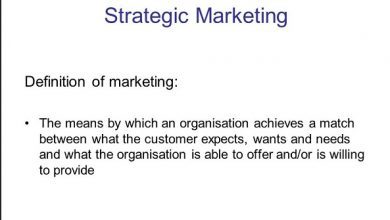Entropy in business/Examples/Impact/negative entropy
Entropy is a concept from physics, more specifically from thermodynamics, which has as its main definition disorder as a result for everything around us. Technically, we can summarize entropy as a quantity where it is possible to determine the number of possible configurations of randomness. In this article we will provide you information about entropy in business.
In today’s text, we will better understand what entropy is and how it impacts business life. Does this concept seem to have no practical relationship? See below that you can take advantage of it to improve many aspects of the company and life in general!
What is entropy?
The technical concept of entropy, as we mentioned above, Entropy is the degree of freedom that a molecule has to result in a configuration. To make it easier to understand, just think of a puzzle: if all the mixed pieces are thrown on the floor, what is the chance that it will assemble itself?
Although practically impossible, there is still a possibility that it will happen. But how many other thousands of formations are possible in this process? Countless.
See that clutter is the most common as a result. In the Universe, everything is constantly changing to disorder, to be finite and to fall apart into what we consider disordered, messy, formless. Another practical example would be melting ice. It is a natural process, however, that can be slowed down but not avoided.
Examples of Entropy
If it was still difficult to understand the concept of Entropy, let’s bring some examples that can help even more. Look:
- An avalanche, where it is impossible to get the snow back to its normal state.
- A house that starts to crumble as time goes on.
- A spoon of salt in water, where it will never be possible for that salt to return to its previous state.
Was it clear, then, that Entropy is a natural process, where all things tend to follow the same path of chaos? Now, we have to apply this concept to the social, after all, the same phenomenon can also be observed in societies, such as:
- A society that begins a process of deterioration until it disappears completely. We have clear examples in history, such as the Roman Empire and other peoples that simply disappeared.
In addition to entropy examples, we need to close this topic with Entropy types, so that the entire concept is clear. Come on!
1- Positive Entropy
Despite the name, positive entropy is that which increases the life, we can think of this as, for example, population growth, which tends to cause more chaos and disorder in modern society.
2- Negative entropy
On the other hand, negative entropy is the one that slows down the process, as an interference that causes this deceleration. We can mention the renovation of a house, which reduces the time it would take to completely degrade. For it to happen, it takes energy working against positive entropy!
3- Zero entropy
There is also the null entropy, which is when only one possibility results in the organization of the system. An example is human creation itself: random disorders generated life.
In business life, how does Entropy impact?
Now that we have brought the general concept of Entropy, let’s talk about it in companies. As in nature and in the universe, companies follow a tendency of disorganization, capable of leading to chaos, in this case, to bankruptcy. In a company, if there is not the necessary energy for the Entropy to be negative, that is, to stop the deterioration process of the business, it can collapse.
A company is a system of inputs and outputs, inputs and outputs, where there is a constant exchange between internal and external. If we have a tendency towards chaos, how is it possible to manage the company so that negative entropy is a priority?
Some experts say that the secret is to deploy more energy on the external – customers – and less on the internal – employees. Obviously, there needs to be a balance, but if your company spends more energy and money putting out internal fires and not serving the external market, the trend is in favor of positive entropy. Here are examples of internal entropy:
- Increase in costs with employees and collaborators, which generate a gradual decrease in profit.
- Sales drop.
- Drop in productivity.
- Decreased process efficiency.
- Difficulty of engagement.
How can the entropy process be controlled by the company?
There is no secret for controlling the entropy process in companies, but good management makes it possible to bring negative entropy into everyday life and stop the positive entropy, which is responsible for the chaos and the speed it takes. install.
It is necessary to increase profitability, productivity and, above all, team engagement, without one improvement not impacting the other. For example, it is not a good idea to increase engagement and do so by decreasing profitability.
What does the process of negative entropy represent for organizations?
As stated throughout the text, negative entropy is a process that brakes the process of positive entropy. In the same way that a renovation slows down the speed at which a house deteriorates, negative entropy prevents companies from going bankrupt, or rather, slows down the rate at which this would naturally happen.
We have two possibilities of positive entropy in companies:
- Internal entropy, which happens when disorder arises internally, without the cause being external. It can be disagreements, fights and even mismanagement.
- External Entropy, when, for example, a market crisis occurs that generates a problem for the company, such as a decrease in profitability.
conclusions
Entropy, as much as it is a natural process of the universe, when applied in everyday life, it must be a concept where it is necessary to seek, above all, the necessary energy to escape from disorder for as long as possible.
As in the example we brought throughout the text, it is necessary to bring energy to renovate a house before it collapses, ensuring that it remains standing over the years. This is how we manage to live with Entropy in organizations and in our personal lives as well.




